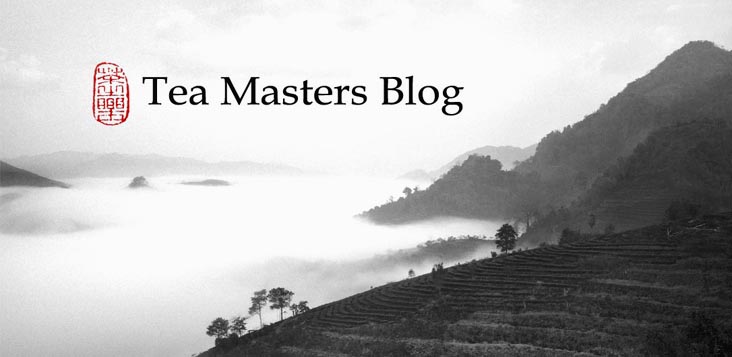Insects are thriving in this type of weather. Long sleeves and mosquito repellent are necessary to avoid being bitten when brewing tea outdoors.
It's therefore quite fitting that I would brew my 2016 fall Zhuo Yan Oolong from Shan Lin Xi on this occasion. It's a jassid bitten high mountain qingxin Oolong that is both sweet and powerful with ripe fruity scents of white pear.
The brew has a very bright and clear orange hue. The scents are very unlike those of a regular high mountain Oolong. They come closer to those of a lightly oxidized competition grade Oriental Beauty.
The uneven oxidation level of the leaves (some greener, some redder) isn't a sign of a lack of skill by the farmer. It usually would indicate just that, but here this is caused by the fact that the leaves that were bitten have started to oxidize before the harvest.
Below, I'm adding more charcoal to my Nilu. The tetsubin is rather big and requires a stronger fire than a smaller pottery kettle. That's why I like to pair it with this rather tall Nilu, because it has a big place for the charcoal.
There are several insects that will bite and eat tea leaves. But Zhuo Yan Oolong can only be made when the leaves are bitten by Jacobiasa formosana Paoli jassids. These small insects are not limited to a certain region in Taiwan. Especially when it's warm, they can multiply anywhere: in high mountains and also in the Wenshan region.
For example, you may see that I have added this Zhuo Yan Baozhong from November 20th to my selection.
Oolong tea thrives in this beautiful landscape of subtropical forests. Amazingly, when conditions turn difficult, when it's attacked, it can turn these threats into opportunities for a positive transformation. What an inspiration in times of change!...


















2 comments:
I had never heard of this bug-bitten tea before! I knew of mi xiang hong cha, oriental beauty, and guei fei mei ren. Are there others I don't know about? Also, I wanted to point out that the large brown spots on the tea leaves in one of your photos are actually damage from another insect, the tea mosquito bug (Helopeltis theivora).
Aariq,
Zhuo Yan Oolong completes the list. But you could argue that any tea has the potential of being jassid bitten. For instance, a few years ago, I had a Hung Shui Oolong with light honey fragrances caused by jassid bites! The difference in taste was not sufficient to create a new category, though.
Thanks for pointing out that these brown spots are caused by the tea mosquito bug. They show that not all bites are caused by the same type of insect.
Post a Comment